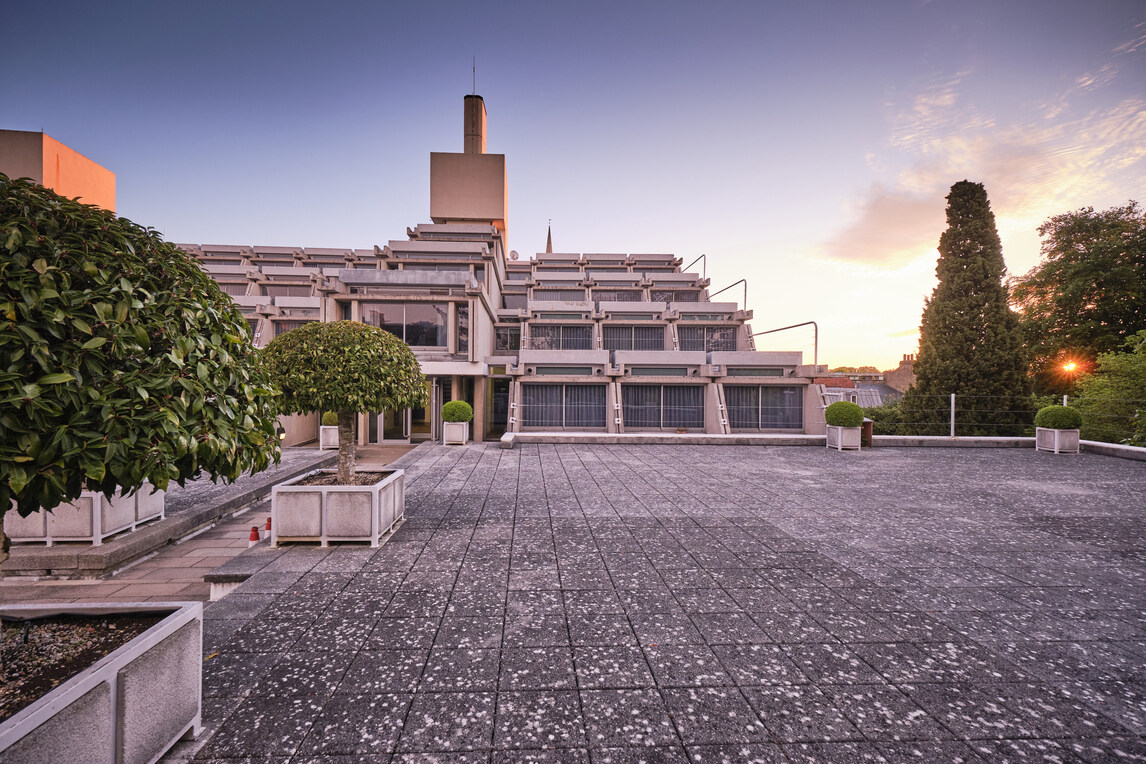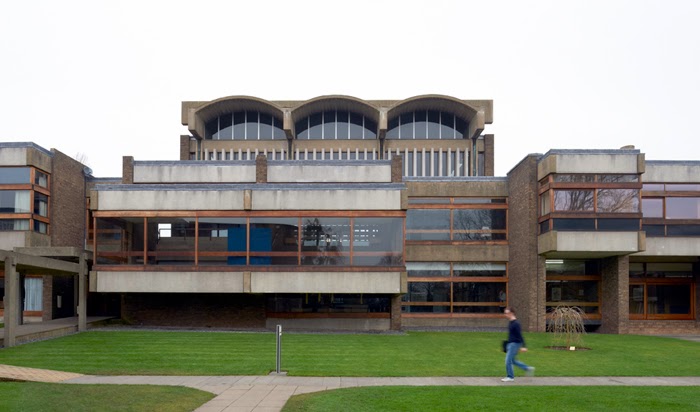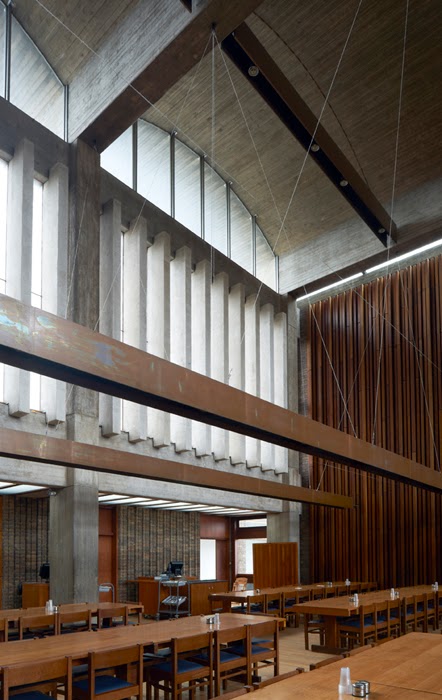
Concrete in Cambridge – The Changing Perspective of Historic Cities
Think Cambridge and one thinks of a city of secluded courts, soaring chapel spires, and picture perfect riverside lawns. This idealistic postcard of Cambridge is what attracts thousands of visitors every year, to gaze, admire, and punt their way through the unarguably historic cityscape. Yet behind this romanticised façade lies a less familiar, often overlooked reality. Cambridge is also home to some of the most radical post-war architecture in the country.
For many, the sight of raw concrete and geometric forms disrupts the idealised version of the city. Buildings like the New Court (Above), Churchill College (Figures 1 and 2 below), Fitzwilliam College and the Faculty of History are often dismissed as eyesores. But such views ignore a deeper truth, a truth that historic cities are not set in stone… or concrete. They evolve. Their layers of architecture tell stories of social change, intellectual ambition, and creative risk. Cambridge is no exception.
From the late 1950s to the early 1970s, Cambridge witnessed a burst of architectural experimentation. Influenced by the optimism of the post-war era, visionary figures such as Sir Leslie Martin (then head of the University’s Architecture Department) championed a new design language. Their goal was not to imitate the past but to reflect the future. The result was a series of buildings that were daring in form, unapologetically modern in material, and intellectually provocative in spirit.
Figures 1 & 2: Churchill College
This was the era of brutalism: a term derived from béton brut, or “raw concrete,” but more broadly associated with an architectural ethos that favoured honesty of materials, functional clarity, and expressive structure. In Cambridge, brutalism became a medium for articulating the University’s evolving identity. Buildings which adopted this form were conceived not just as places of learning, but as statements of innovation and as architectural responses to the progressive ideas being shaped inside their walls.
The buildings were subject to waves of criticism. Buildings which once symbolised progress became targets of disdain, being likened to bunkers and factory shells. For decades, Cambridge’s modernist heritage was sidelined in favour of more picturesque images of punts and porticoes.
But perceptions change.
The rough concrete beams of Churchill College, once maligned, are now celebrated as “true to Modernist thinking”, revealing, rather than concealing, their structure. The angular, glass-roofed Faculty of History, described as a “floating cloud” by Professor Claire Zimmerman, is now not only listed but revered in architectural circles for its complex composition and radical intent.
This architectural shift reflects something deeper: a growing recognition that heritage is not a style, but a story. Cambridge’s post-war buildings are part of that story and are not in opposition to its history, but consist of the continuation of the city. They speak to a moment of daring in British architecture, when universities were engines of modernity and design was driven by clarity of purpose. These were not nostalgic buildings, they were blueprints for an academic future.
Today, many of these structures are statutorily protected. The dialogue between old and new enriches the city of Cambridge and reminds visitors that conservation is not about freezing time, but about understanding how areas develop, and about recognising that each generation builds not just with stone, but with progressive ideas.
Cambridge may always be associated with its towers and turrets, but there is another Cambridge, one that is angular, concrete, and rebellious, which tells a different but no less important story. Perhaps it is therefore the interplay of these perspectives that is the true identity of the historic city.
Archie Kelly-Bush, Consultant



